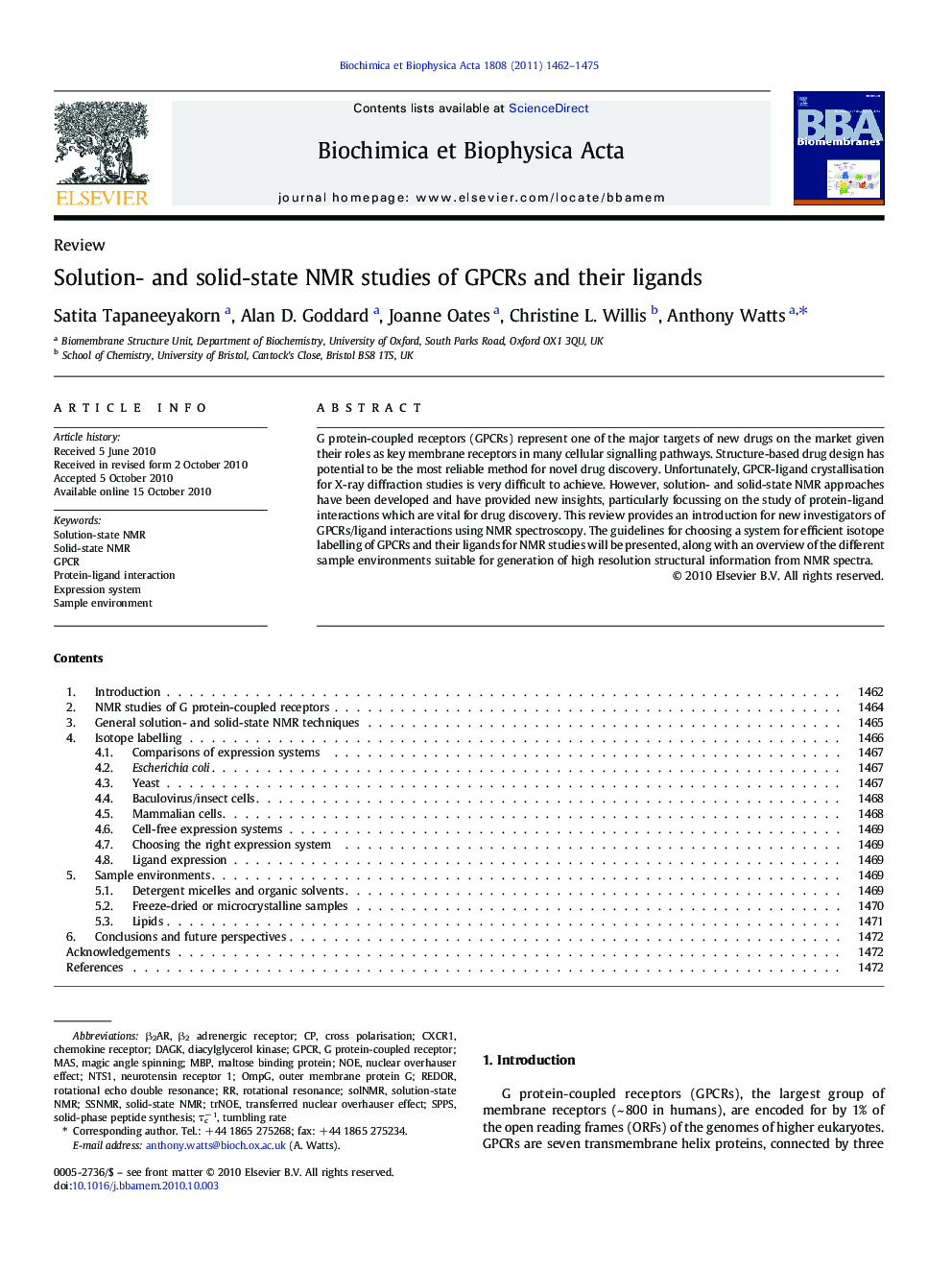| Article ID | Journal | Published Year | Pages | File Type |
|---|---|---|---|---|
| 10797890 | Biochimica et Biophysica Acta (BBA) - Biomembranes | 2011 | 14 Pages |
Abstract
G protein-coupled receptors (GPCRs) represent one of the major targets of new drugs on the market given their roles as key membrane receptors in many cellular signalling pathways. Structure-based drug design has potential to be the most reliable method for novel drug discovery. Unfortunately, GPCR-ligand crystallisation for X-ray diffraction studies is very difficult to achieve. However, solution- and solid-state NMR approaches have been developed and have provided new insights, particularly focussing on the study of protein-ligand interactions which are vital for drug discovery. This review provides an introduction for new investigators of GPCRs/ligand interactions using NMR spectroscopy. The guidelines for choosing a system for efficient isotope labelling of GPCRs and their ligands for NMR studies will be presented, along with an overview of the different sample environments suitable for generation of high resolution structural information from NMR spectra.
Keywords
CXCR1Sample environmentTRNOECross polarisationNTS1Transferred nuclear Overhauser effectSolution-state NMRSPPSssNMRNOEβ2ARDAGKMBPGPCRSolid-state NMRβ2 adrenergic receptornuclear overhauser effectMASProtein-ligand interactionREDORdiacylglycerol kinaseRotational echo double resonanceRotational resonancemagic angle spinningSolid-phase peptide synthesisExpression systemmaltose binding proteinchemokine receptorneurotensin receptor 1G protein-coupled receptor
Related Topics
Life Sciences
Biochemistry, Genetics and Molecular Biology
Biochemistry
Authors
Satita Tapaneeyakorn, Alan D. Goddard, Joanne Oates, Christine L. Willis, Anthony Watts,
